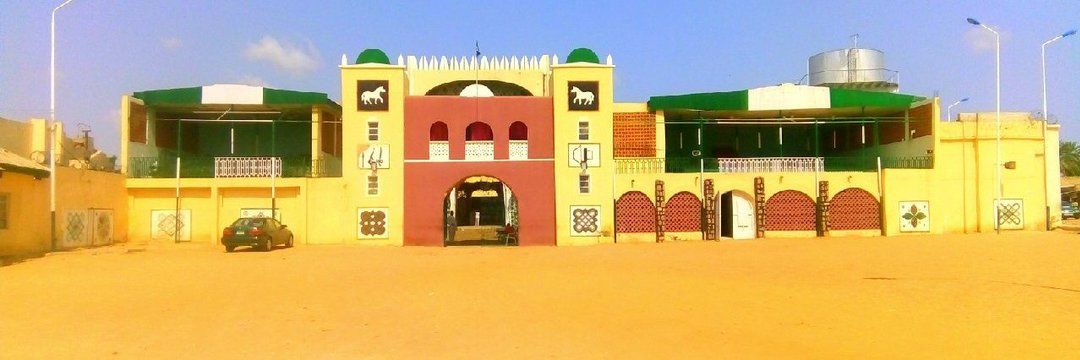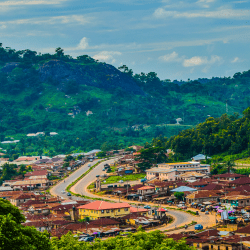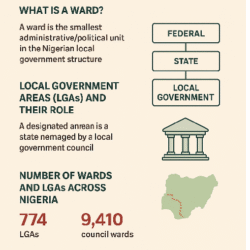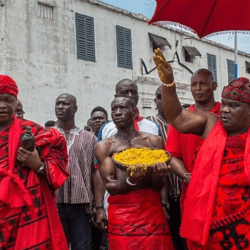Hadejia is a town in Jigawa State, Nigeria. The name also refers to the wider area around the town.


Prior to the rise of the emirate Council in Hadejia, the territory now known as Hadejia or Kasar Hadejia, was made up of seven separate and distinct kingdoms namely: Garun Gabas, Auyo, Dawa, Fagi, Kazura, Gatarwa and Hadejia.
These kingdoms possessed neither historical documents nor codified oral traditions which could throw light on their histories.
Knowledge of these Kingdoms therefore remains obscure and scanty. Available oral tradition tells that the rulers of each of these seven Gudiri States received their titles from, and owed allegiance to the Mai of Borno through the Galadima, whose seat was at Nguru. Furthermore, the same tradition tells us that Auyo and Garun Gabas were the oldest of the seven Kingdoms.
The kingdom of Auyo together with Tashena and Shira of Katagum emirate were said to be founded in about 1400 A.D. by immigrants from Baghirmi, while Hadejia and probably the rest of the kingdoms were founded afterwards.
The founders and early settlers of all the Kingdoms east of Kano, we are told, were attracted to this area by its richness in terms of grazing land, fertile landscape. and fishing streams. Hadejia town, for instance, owed its name and origin to a Kanuri hunter from Machina, Hade, and his wife, Jiya, who, while on hunting expedition, became attracted to the area because of its rivers and other natural endowments. Hade became the founder of Hadejia and the first in a long line of Hadejia Kings – thirty-two in all who ruled the area before the nineteenth century jihad.
The names of only three of these kings have been preserved – Baude, Musa and Abubakar (Gowers, 1921).
The town and the kingdom, and indeed later the emirate, got their name when Hade and his wife Jiya settled in the area, and the people in the surrounding settlements started to migrate to, or identify the area with, them.
It is said that the people often referred to the settlement as Garin (town of) Hade and Jiya and later merged the two names and simply called it HADEJIYA, after the name of the man and his wife.
Be that as it may, what emerged from the little we know is that Hadejia together with the six other kingdoms in the region were all at one time or the other brought under the control of Borno Empire.
They constituted what the Bornoans called the “Nguderi or “Gudiri’ territories. They remained under Borno’s imperial control up till the beginning of the Nineteenth Century when the Fulani invaded and transformed it into what became known as the Hadejia emirate.
The founders of the emirate were a group of nomadic cattle herdsmen who were descendants of one Hardo Abdure. They were said to have come from Machina in western Borno in search of grazing land; and by the end of the 18th century a sufficient number of them had settled in the area due to the availability of rich pasture. Owing to the growing number of Fulani communities in the area, Sarki Abubakar, the last Hausa King of Hadejia, appointed one Umaru B. Abdure as Sarkin Fulanin Hadejia in about 1788.
On the outbreak of the 19th century jihad under Shehu Usman Dan Fodio in about 1805, Sarkin Fulanin Hadejia Umaru was reported to have sent a delegation to pay homage (bay’a) to Shehu Dan Fodio. The delegation from Hadejia was led by Umaru’s younger brother Muhammadu Sambo and his cousin Laraima. The delegation returned to Hadejia with a flag symbolizing that Umaru had been recognized as Shehu’s lieutenant in the region and thereby authorized to wage the jihad against the pagans and nominal Muslim leaders in the Hadejia-Auyo axis. Also, the Shehu authorized Laraima, Umaru’s cousin, to wage the jihad from Marma against the Kingdoms of Fagi and Dawa.
However, it ought to be noted that most members of the delegation that accompanied Sambo to visit Shehu were not ethnic Fulbe, which partly explains the reason why non Fulani later dominated civil as well as military offices of the new emirate. The possible reasons which accounted for the refusal of Umaru’s kinsmen to be in the delegation to the Shehu were partly political and partly economic. For one, they feared that should the powerful Chief of Auyo come to know that they were planning to join the holy-war he would certainly have dealt with them ruthlessly. Fremantle, writing in 1910 adduced another, more prosaic, reason when he argued that the Fulani Chief’s men preferred tending their cattle to accompanying Sambo on his visit to Shehu, hence the overwhelming presence of non-Fulani group rather than Fulani in the delegation (Fremantle, 1910).
The course and aftermath of the jihad in Hadejia area can be briefly summarized as follows: The jihad started in 1805 with a series of attacks on Auyo territories. Rinde was the first target to be forced into submission, followed by Akurya. Subsequently, the powerful force of Sarkin Auyo was defeated by the Jihadists. Indeed, within the span of three years the Jihadists under the leadership of Umaru and Sambo took possession of Auyo, Hadejia, Gatarwa, Garun Gabas and Kazura Kingdoms. These five Kingdoms, after being amalgamated under one leadership, become transformed into the emirate of Hadejia. The remaining two kingdoms of Fagi and Dawa were initially given by the Shehu to Laraima who settled at Marma and assumed the title of Sarkin Marma, a kind of sub-emirate of Hadejia. However, after the death of Laraima the sub-emirate of Marma was incorporated into Hadejia emirate by Buhari thereby bringing the emirate roughly to its present size.
Reference
https://jigawastate.gov.ng/hadejia-emirate.php











